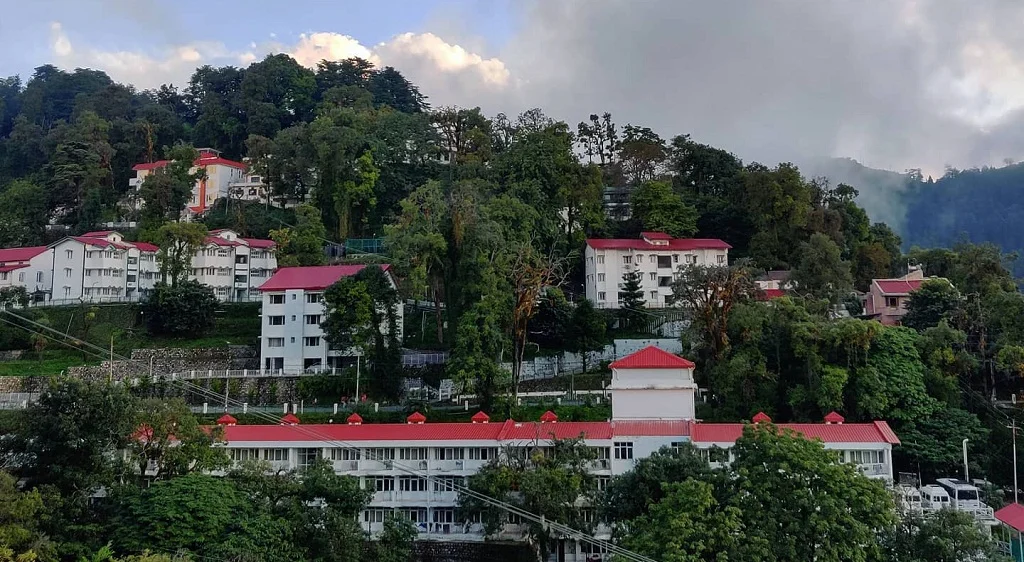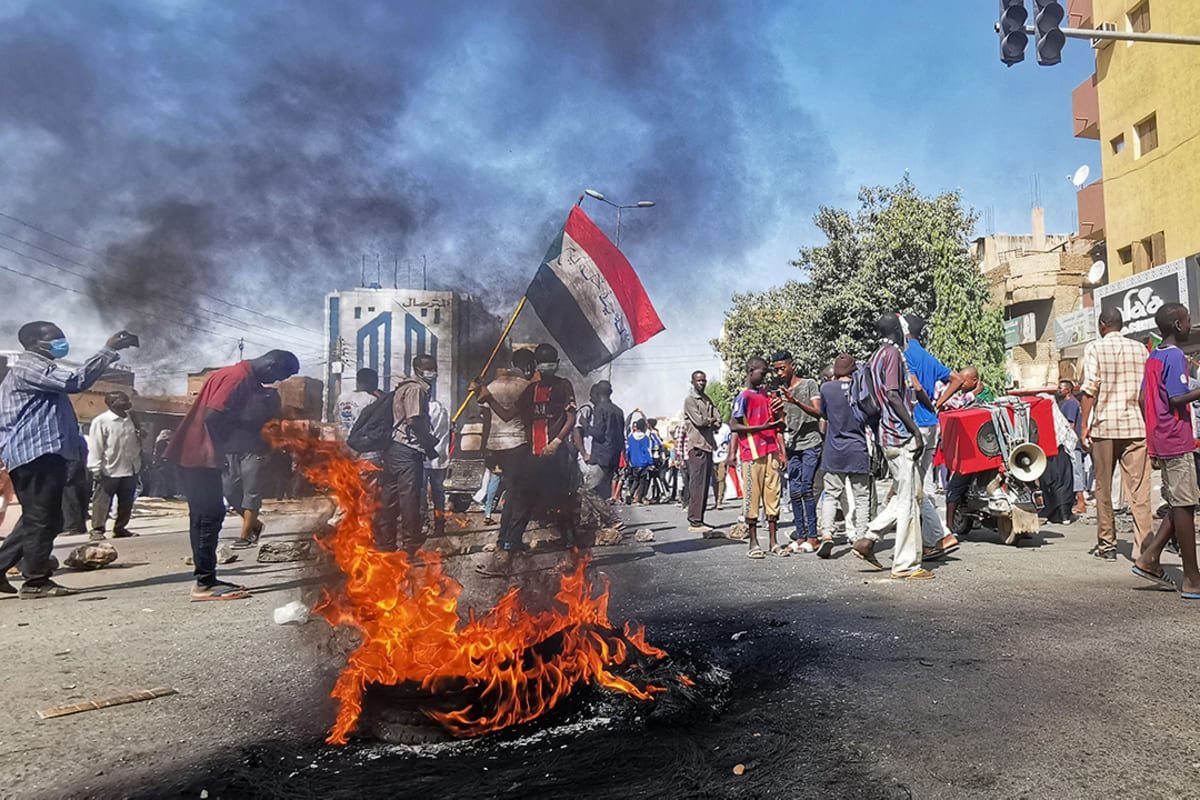What is the full form of IAS?
- The full form of IAS is Indian Administrative Service.
What is IAS?
- The Indian Administrative Service (IAS) is one of the most prestigious and sought-after services under the Government of India.
- It is one of the three All India Services, along with the Indian Police Service (IPS) and the Indian Forest Service (IFoS).
- The IAS was earlier known as the Imperial Civil Service (ICS) during British rule and was officially established in 1858 following the transfer of administrative control from the East India Company to the British Crown.
- Recruitment to the IAS is conducted through the highly competitive Civil Services Examination (CSE), organized by the Union Public Service Commission (UPSC).
- The success rate of this examination is approximately 2%, making it one of the toughest competitive exams in the world.
- While nearly 10 lakh candidates apply for this exam annually, only about 180 candidates are selected for IAS posts.
- Apart from direct recruitment through the CSE, a limited number of State Civil Service (SCS) officers are promoted to the IAS as part of the service’s lateral entry mechanism.
What Does the IAS Do?
- The Indian Administrative Service forms the backbone of India’s bureaucratic framework and is vital for the country’s policy formulation, implementation, and governance.
- IAS officers serve at various levels of administration including:
- Central Government
- State Governments
- Public Sector Undertakings (PSUs)
- International Organizations (like the UN, World Bank, IMF, WHO)
- They hold key posts such as:
- Sub-Divisional Magistrate (SDM)
- District Collector
- Divisional Commissioner
- Chief Secretary
- Cabinet Secretary (the topmost bureaucratic position in India)
- While elected politicians represent the temporary executive, IAS officers are part of the permanent executive, providing continuity and institutional memory within the government.
Roles and Responsibilities of an IAS Officer
IAS officers undertake a wide range of roles, depending on the stage of their career and the nature of their assignments. These can be broadly categorized as follows:
- Field Assignments (District Administration)
- These are the most demanding roles, where the officer deals directly with the public and administrative machinery. Duties include:
- Law and order maintenance
- Revenue collection
- These are the most demanding roles, where the officer deals directly with the public and administrative machinery. Duties include:
- Disaster and crisis management
- Implementation of welfare schemes
- State Secretariat
- In the state government, IAS officers assist ministers in framing policies, drafting legislation, and ensuring implementation of programs across departments such as health, education, agriculture, and industry.
- Central Secretariat
- At the central level, they help frame national policies and supervise their implementation across states.
- Officers are posted in Ministries such as Finance, Defence, Home Affairs, External Affairs, etc.
- Public Sector Undertakings (PSUs)
- IAS officers may be posted to senior managerial or board-level positions in PSU organizations dealing with sectors like energy, defence, and heavy industries.
- International Assignments
- Senior IAS officers represent India in international organizations such as:
- United Nations (UN)
- World Health Organization (WHO)
- Senior IAS officers represent India in international organizations such as:
- World Trade Organization (WTO)
- International Monetary Fund (IMF)
- World Bank
Why is the IAS Exam so Tough?
- Given the immense responsibility, authority, and influence vested in IAS officers, the selection process is designed to identify candidates with:
- Intellectual depth
- Administrative acumen
- Moral integrity
- Leadership and decision-making ability
- This is why the UPSC CSE is highly challenging, testing not just knowledge but also analytical, interpersonal, and ethical capabilities.
- With the right strategy, consistent effort, and proper guidance, it is certainly possible to crack this exam.
Perks and Benefits of Being an IAS Officer
In addition to salary, IAS officers enjoy several perks and privileges:
- Accommodation
- Spacious, well-furnished government housing is provided, along with domestic staff such as cooks, gardeners, and watchmen.
- Transport
- Official vehicles with government drivers are provided.
- Security
- Given their sensitive responsibilities, officers and their families are entitled to personal security, especially in disturbed areas.
- Bills and Utilities
- Electricity, water, and phone bills are either heavily subsidized or paid for by the government.
- Study Leave
- After completing 7 years of service, officers can avail of study leave (up to 2 years) to pursue higher education in reputed global institutions.
- A bond must be signed to serve for a certain number of years afterward.
- Leave Travel Concession (LTC)
- Free or subsidized travel for official tours and personal holidays within India.
- Job Security
- Protected under Article 311 of the Constitution, which ensures procedural safeguards against arbitrary dismissal.
- Post-Retirement Benefits
- National Pension Scheme (NPS) contributions by both government and officer
- Opportunities in constitutional bodies, tribunals, commissions, or as advisors to ministries
Salary Structure of IAS Officers
During Training at LBSNAA
- Trainees receive around ₹45,000/month as a stipend.
- Deduction of around ₹10,000 is made for food, clothing, and accommodation.
After Training
| Pay Grade | Grade | Basic Pay | Grade Pay | Service Period | Post |
| 10 | Junior Scale | ₹50,000-₹1,50,000 | ₹16,500 | 0-4 years | SDM, SDO, ADM (after completion of 2 years probation period) |
| 11 | Senior Time Scale | ₹50,000-₹1,50,001 | ₹20,000 | 5 years | DM, DC, Joint Secretary |
| 12 | Junior Administrative Grade | ₹50,000-₹1,50,002 | ₹23,000 | 9 years | Special Secretary, State Government Department Heads |
| 13 | Selection Grade | ₹1,00,000-₹2,00,000 | ₹26,000 | 12-15 years | Ministry Department Head |
| 14 | Super Time Scale | ₹1,00,000-₹2,00,000 | ₹30,000 | 17-20 | Director of any Ministry |
| 15 | Above Super Time Scale | ₹1,00,000-₹2,00,000 | ₹30,000 | Not fixed | Commissioner, Additional Secretary |
| 16 | Apex Scale | ₹2,40,000 (fixed) | NA | Not fixed | Chief Secretary in Ministries |
| 17 | Cabinet Secretary Grade | ₹2,70,000 | NA | Not fixed | Cabinet Secretary |
Powers and Authority of an IAS Officer
IAS officers hold positions of immense responsibility, authority, and influence across different levels of government. Their powers span administrative, executive, quasi-judicial, regulatory, developmental, and crisis-management domains. These powers evolve with their career progression—from Sub-Divisional Magistrate (SDM) to District Magistrate (DM), Secretaries in state and central governments, and eventually to Cabinet Secretary of India.
- Administrative Authority
- IAS officers function as the administrative heads of:
- Districts (as DMs/Collectors)
- Divisions (as Commissioners)
- IAS officers function as the administrative heads of:
- Departments (as Secretaries/Directors)
- Ministries (as Joint Secretary/Additional Secretary, etc.)
- They supervise and coordinate with various departments including police, health, education, irrigation, public works, and disaster management.
- As the administrative head, they:
- Allocate tasks to subordinate officials
- Approve expenditure within prescribed limits
- Represent the government in official matters
- Oversee law enforcement, public infrastructure, and public service delivery
- Grievance Redressal and Public Interface
- IAS officers are often the first point of contact for citizens facing issues related to governance.
- As part of their role:
- They conduct public hearings and Jan Sunwais
- Monitor and resolve complaints through online grievance portals
- Inspect field conditions and interact with marginalized communities
- Take suo motu action when urgent issues affect public interest
- Policy Implementation and Developmental Role
- IAS officers play a central role in translating policies into action at ground level.
- This includes:
- Designing District Development Plans
- Monitoring and evaluating scheme outcomes
- Coordinating with NGOs and private players for Public-Private Partnerships (PPPs)
- Ensuring last-mile delivery of welfare schemes
- Quasi-Judicial and Police Powers
- IAS officers, especially at the field level, act as Executive Magistrates and are vested with powers under the Criminal Procedure Code (CrPC).
- These include:
- Section 107: Prevent breach of peace
- Section 108–110: Handle habitual offenders and maintain public order
- Section 144: Impose curfew and prohibit unlawful assembly during emergencies
- Section 176: Conduct inquiries into custodial deaths or police encounters
- They are also empowered to issue orders for preventive detention, seizure of property, and maintenance of public tranquility.
- Revenue and Land Administration
- IAS officers are custodians of land and revenue records.
- Their powers include:
- Assessment and collection of land revenue
- Supervision of patwaris, tehsildars, and revenue inspectors
- Adjudication of disputes related to land and tenancy
- Maintenance of land ownership and mutation records
- Management of government land and eviction of encroachments
- Regulatory and Licensing Powers
- IAS officers are entrusted with issuing and regulating essential licenses:
- Arms licenses
- Drug and pharmacy licenses
- IAS officers are entrusted with issuing and regulating essential licenses:
- Petroleum storage permissions
- Public performance and loudspeaker permissions
- Regulation of trade practices under the Essential Commodities Act
- They can conduct raids, suspend licenses, and initiate criminal proceedings for violations.
- Disaster and Crisis Management
- IAS officers are front-line responders during crises such as:
- Natural disasters (floods, cyclones, droughts, earthquakes)
- Health emergencies (pandemics like COVID-19)
- IAS officers are front-line responders during crises such as:
- Man-made disasters (industrial accidents, communal riots)
- They chair the District Disaster Management Authority (DDMA) and coordinate with multiple departments to ensure:
- Emergency response and rescue operations
- Relief distribution
- Medical assistance
- Rehabilitation of affected populations
- Moral, Social and Ethical Leadership
- Beyond formal powers, IAS officers are expected to:
- Act with integrity and impartiality
- Ensure inclusivity in governance
- Beyond formal powers, IAS officers are expected to:
- Champion transparency and accountability
- Stand against corruption, discrimination, and human rights violations
Role and Powers of the District Magistrate (DM)
The District Magistrate (DM), often referred to as the District Collector or Deputy Commissioner (in some states), is the highest-ranking executive officer in a district. Usually held by an IAS officer, the DM is responsible for maintaining law and order, overseeing development, and managing disaster responses within their jurisdiction.
- Administrative Functions of the DM
- Law and Order Maintenance: Supervise police functioning, issue preventive orders, deploy forces during unrest.
- Executive Magistrate Duties: Conduct magisterial courts, pass binding orders under CrPC.
- Crisis Management: Act as incident commander during floods, riots, pandemics.
- Coordination of Departments: Chair District Development Committee, harmonize work of departments like education, health, and PWD.
- Licensing & Regulation: Approve or cancel licenses under the Arms Act, Cinematograph Act, etc.
- Revenue Functions of the DM
- Land Revenue Collection: Ensures timely and lawful collection of taxes on land and related properties.
- Land Acquisition: Manages compensation, rehabilitation, and acquisition procedures for public projects.
- Certification: Authorizes issuance of income, caste, domicile, marriage, birth/death certificates.
- Supervision of Revenue Courts: Adjudicates land-related disputes and hears appeals from subordinate revenue officers.
- Legal Empowerment of the DM (Under CrPC)
- Under Criminal Procedure Code, 1973, the DM possesses extraordinary powers, including:
- Section 144: Ban public gatherings to prevent unrest
- Section 133: Remove public nuisances (e.g., illegal constructions, polluted drains)
- Under Criminal Procedure Code, 1973, the DM possesses extraordinary powers, including:
- Section 174-176: Supervise investigations into suspicious deaths, custodial deaths
- Preventive Detention Orders: Issue detention under NSA (on state government approval)
- They also exercise search and seizure powers, conduct inquiries, and monitor enforcement of court orders in the district.
- Crisis and Disaster Management Authority
- The DM is the Chairperson of the District Disaster Management Authority (DDMA) and has the authority to:
- Activate disaster response protocols
- Mobilize relief camps and rescue teams
- The DM is the Chairperson of the District Disaster Management Authority (DDMA) and has the authority to:
- Impose curfews or restrict movements during emergencies
- Collaborate with NDRF, SDRF, Civil Defence, Army, and NGOs
- Supervisory Role
- Supervision over Police and Magistrates: The DM oversees the work of the Superintendent of Police and subordinate executive magistrates.
- Oversee Elections: Acts as District Election Officer during general and state elections.
- Census & Survey Duties: Lead officer for operations like the Decennial Census and SECC (Socio-Economic Caste Census)..
IAS Exam: Eligibility and Details
- Educational Qualification
- Graduation in any stream from a recognized university
- Final-year students can apply for Prelims
- MBBS graduates awaiting internship completion can also appear
- Age Criteria
| Category | Upper Age Limit | Maximum Attempts |
| General | 32 years | 6 |
| OBC | 35 years | 9 |
| SC/ST | 37 years | Unlimited |
| EWS | 32 years | 6 |
| Defence Personnel | 35 years | 9 |
| PwBD | 42 years | 9 |
- An attempt is counted only when a candidate appears for Prelims.
- Candidates selected to IFS (Indian Foreign Service) cannot appear again.
How to Prepare for the IAS Exam
- Understand the Exam Pattern: Prelims → Mains → Interview
- Read the Official Notification Thoroughly
- Study Past Year Papers: Identify trends, focus areas
- Choose Optional Wisely: Consider interest, background, scoring pattern
- Use Reliable Sources: Start with NCERTs, follow up with standard books
- Stay Updated with Current Affairs
- Make a Personalized Timetable: Balance static + current affairs
- Revise and Write Mocks Regularly
- Focus on Mental and Physical Health
Conclusion
Becoming an IAS officer is not just about cracking an exam—it’s about dedication to public service, nation-building, and ethical leadership. The journey may be demanding, but it is equally rewarding, both in terms of personal growth and societal impact. The prestige, power, and opportunity to serve millions make IAS a truly noble and life-changing career. With the right mindset, disciplined preparation, and unwavering commitment, you too can become part of this elite service and bring meaningful change to the lives of people across India.
FAQs
- What is the full form of IAS?
The full form of IAS is Indian Administrative Service. It is one of the three All India Services constituted under Article 312 of the Indian Constitution, alongside the Indian Police Service (IPS) and Indian Forest Service (IFoS). IAS officers form the backbone of the Indian administrative machinery and are entrusted with key roles in policymaking, implementation, and governance across various levels of government.
- What is the cutoff for the UPSC Preliminary Examination?
The UPSC Preliminary Examination (Prelims) consists of two papers:
- General Studies Paper I (GS-I) – This paper is used to determine the cutoff for selection to the Mains examination.
- General Studies Paper II (CSAT) – This is a qualifying paper, and a candidate must secure at least 33% marks (i.e., 66 out of 200 marks) to be eligible for consideration.
The cutoff for GS Paper I varies each year and depends on several factors, including:
- The difficulty level of the paper,
- The number of vacancies notified,
- The performance of candidates, and
- The category of the candidate (UR, OBC, SC, ST, EWS, PwBD, etc.).
- How many papers are there in the UPSC CSE Mains Examination?
The UPSC Civil Services (Main) Examination consists of 9 papers, out of which 7 are considered for ranking, and 2 are qualifying papers. The details are as follows:
Qualifying Papers:
- Paper A: Indian Language (as per the candidate’s choice from the Eighth Schedule)
- Paper B: English
To qualify, a minimum of 25% marks must be secured in each of these papers. These are not counted in the final merit list.
Papers Considered for Ranking:
- Paper I: Essay
- Paper II: General Studies I (Indian Heritage, Culture, History & Geography)
- Paper III: General Studies II (Governance, Constitution, Polity, Social Justice & IR)
- Paper IV: General Studies III (Economy, Environment, Security, Science & Tech)
- Paper V: General Studies IV (Ethics, Integrity & Aptitude)
- Paper VI & VII: Optional Subject – Paper 1 and 2 (subject chosen by the candidate)
Each paper carries 250 marks, totaling 1750 marks for merit ranking.
- What are the international responsibilities of an IAS officer?
Apart from their domestic administrative duties, IAS officers are also deputed to international organizations and multilateral institutions to represent India. Some of these international responsibilities include:
- Participating in global negotiations and summits (e.g., climate talks, trade discussions)
- Working in international agencies like the United Nations (UN), World Health Organization (WHO), World Trade Organization (WTO), World Bank, and International Monetary Fund (IMF)
- Serving as part of India’s diplomatic and economic delegations
- Collaborating on development projects, treaties, and technical cooperation programs
Senior IAS officers may be appointed as envoys, consultants, or liaison officers on behalf of India in global forums.
- What is the starting salary of an IAS officer?
During the training period at Lal Bahadur Shastri National Academy of Administration (LBSNAA), IAS officers receive a stipend known as Special Pay Advance, which is approximately ₹45,000 per month. This amount is subject to deductions (about ₹10,000) for mess charges, uniforms, and other amenities.
After two years of training they earn their first salary. Approximately Rs 56,100 is the starting salary of an IAS officer. However, it rises with experience and promotion.
- What are the additional perks and facilities provided to IAS officers?
In addition to salary, IAS officers enjoy several non-monetary perks and entitlements, which include:
- Rent-free Government Accommodation, usually spacious bungalows in prime localities
- Official Vehicle(s) with chauffeur
- Domestic Staff, including peons, gardeners, cooks (varies by location/rank)
- Security Arrangements, especially in sensitive postings
- Subsidized Utilities – electricity, water, gas, telephone, and internet
- Free or reimbursed Travel for official duties and Leave Travel Concession (LTC)
- Study Leave – Up to 2 years for pursuing higher education abroad or in India after 7 years of service
- Medical facilities in top government or empanelled hospitals
- Post-retirement benefits including pension under the National Pension Scheme (NPS)
These benefits collectively ensure a comfortable, secure, and dignified lifestyle, enabling officers to focus fully on public service.
- What is the maximum salary of an IAS officer during their service tenure?
The maximum salary that an IAS officer can draw during their tenure is as follows:
- Basic Pay: ₹2,50,000 per month (for the post of Cabinet Secretary, the senior-most civil servant in India)
- Allowances: Dearness Allowance (DA) is revised twice a year based on inflation and can exceed 100% of the basic pay.
Thus, the total gross salary of top-level IAS officers, including allowances, can cross ₹5 lakh/month.
Other senior-level officers, such as Chief Secretaries of States or Secretaries in the Central Government, draw salaries ranging from ₹2,05,400 to ₹2,25,000 per month, depending on pay grade and years of service.
- What is Special Pay Advance?
Special Pay Advance refers to the monthly stipend paid to IAS officer trainees during their training at LBSNAA. The amount is approximately ₹45,000 per month and is charged against the officer’s cadre state. It is not considered a full salary.
However, around ₹8,000 to ₹10,000 is deducted each month for:
- Mess charges
- Accommodation and maintenance
- Uniform and ceremonial clothing
- Recreational activities and training equipment
This allowance ensures that trainees can live comfortably while undergoing rigorous academic and field training without financial burden.





